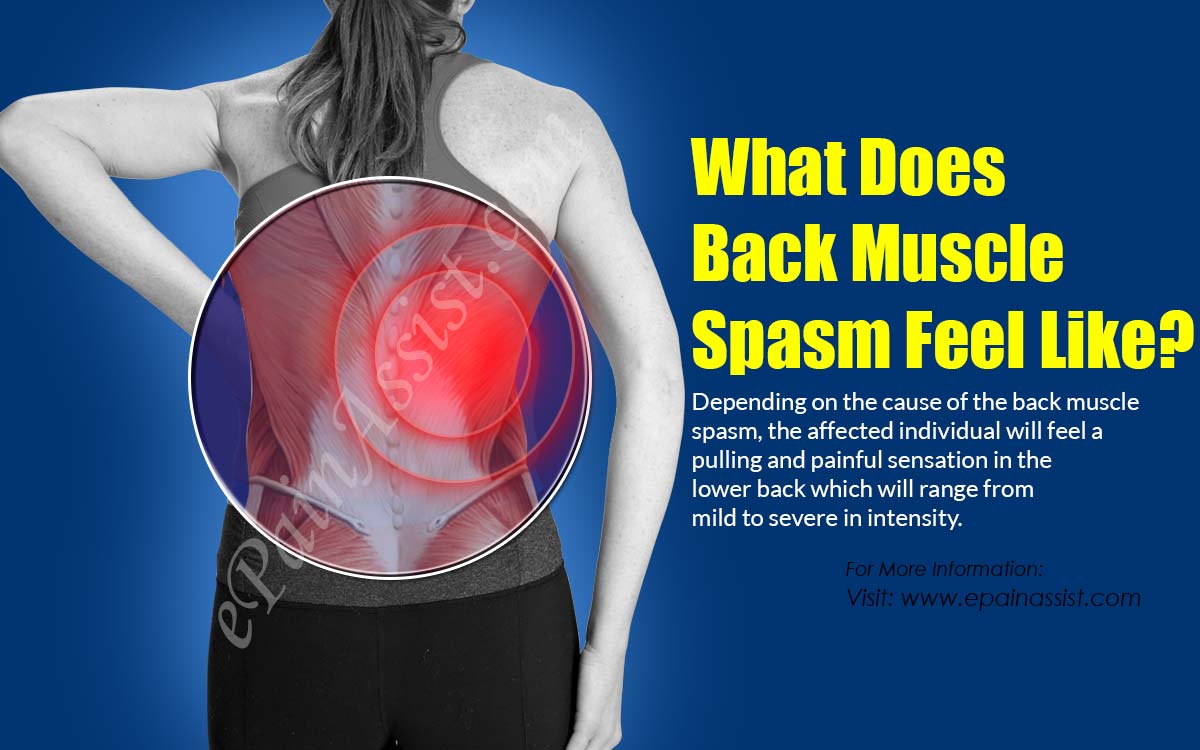About Back Muscle Spasms
Muscle spasms which are also known as muscle cramps occur as a result of involuntary contractions of a muscle. Muscle spasm is quite a common phenomenon and can occur in any muscle of the body.1 Muscle spasms are commonly seen in the thighs, calves, hands, arms, back and the abdomen. Muscle spasms can occur in an individual irrespective of the individual’s age. They are usually caused as a result of inadequate stretching before a strenuous physical activity, muscle fatigue, dehydration, and working out in extremely hot and humid conditions.
Coming to back muscle spasm, athletes who are involved in throwing, and construction workers who bend and lift heavy items on a repetitive basis are more prone to get back muscle spasms.

What Does Back Muscle Spasm Feel Like?
Depending on the cause of the back muscle spasm, the affected individual will feel a pulling and painful sensation in the lower back which will range from mild to severe in intensity. The back pain may radiate down to the hip region as well.
As a result of a back muscle spasm, the individual may also develop a curvature of the spine. Dropfoot is yet another feature that presents itself in cases of severe back muscle spasms. In severe cases of back muscle spasms, the individual may even have neurological symptoms of numbness and tingling in the lower extremities. There is also stiffness of the spine associated with back muscle spasm. Sciatica is yet another feature that is prevalent in individuals with severe back muscle spasm.
In some cases, back muscle spasm is a sign of a more serious medical condition and thus if an individual has frequent back spasms along with symptoms like numbness and tingling on one side of the body, balance problems, bowel and bladder dysfunction then the individual must consult with a physician to get a more definitive diagnosis and start treatment at the earliest.
In conclusion, back muscle spasm is quite a common condition among athletes, weight lifters and construction workers. The presenting feature of a back muscle spasm is severe pain in the back which may radiate to the hips.
In cases of severe spasms, the affected individual may also get certain neurological symptoms like headaches, sciatica pain, or numbness and tingling sensation in the lower extremities.
In case if an individual experiences frequent back muscle spasms along with neurological symptoms like impaired balance and bowel and bladder dysfunction, then it may be a sign of a more serious medical condition and the individual needs to consult with a physician to identify the cause of it and start treatment for the same.
Also Read:
- Q and A on Disabling Low Back Pain Due To Muscle Spasm or Tense Back Muscles or Facet Joint Pain
- Lower Back Muscle Spasms: Causes, Symptoms, Treatment
- What Causes Back Muscle Spasms or Sprain & What is its Treatment, Prevention
- How Long Do Back Spasms Last & What to Do For it?
- 7 Causes of Back Muscle Spasm & Its Risk Factors
